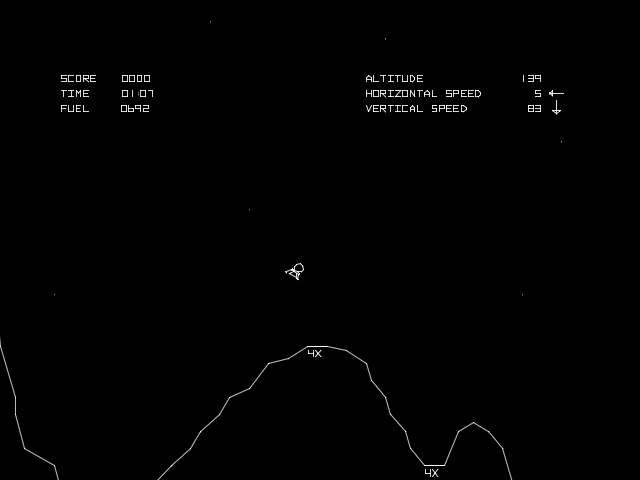Linkfest #22: Dragon Biology, Soviet Food Kiosks, and Duran Duran's "Rio" Model Finally Discovered
Heyo!
It’s time for "the opposite of doomscrolling” — your latest “Linkfest”, in which I comb the endless glitching stacks of the cyberspace to find the absolute best stuff for you to read and view.
Thank you, as ever, for being a subscriber! If you’re enjoying it, spread the word far and wide — forward this email to literally anyone on the planet who needs diversion. There's a pay-what-you-want signup here; the folks who can afford to contribute help keep it free for everyone else.
Let’s begin ...
1) 📺 How Marion Stokes single-handedly taped 35 Years of TV News

I just now stumbled across the astonishing story of Marion Stokes — a woman who in 1977 became determined to tape every TV news broadcast she could get her hands on. Otherwise, she told her son, this stuff will vanish.
Over the next 35 years until her death, she filled a staggering 140,000 VHS tapes with news broadcasts. As Sarah Kessler wrote in a 2013 profile for Fast Company …
She’d feed a six-hour tape into the recorders late at night. She’d wake up early the next day to change them (or conscript family members to do the same if she wasn’t home). She’d cut short meals at restaurants to rush home before tapes ended. [snip]
Stokes bought VHS tapes by the dozen. As she recorded, she made stacks so high they would fall over. The project took over several of the apartments she owned. [snip]
Stokes had a habit of watching two televisions at once, and her son says she could pay attention to both at the same time. Plus, there were often several more televisions running without volume in bedrooms and hallways as they recorded other channels.
After her death, her son got in touch with TV historians, whose minds were blown: They’d heard of private citizens filling maybe 200 VHS tapes with news, but not 140,000. The Internet Archive has been scanning her broadcasts, and they are fascinating to see!
A documentary about Stokes was made in 2019, and you can find where to stream it here, and see the trailer here.
2) 🏐 Sand spheres

Olander Earthworks makes these gorgeous concrete spheres, milled with ridged patterns that let you create patterns in sand by rolling the sphere around.
Here’s a video of it in action …
That looks hypnotic and soothing, I’m in.
3) 🐉 How might dragons actually breathe flame?

Dragons mythically have the ability to breathe flame, as in Game of Thrones (above). But how exactly would this biology work? Could it work?
Mark Lorch, a chemist at the University of Hull, thinks he’s figured out a possible route. In this essay he notes that some animals — like the fulmar gull — produce “energy rich stomach oil” that they can vomit on command. A dragon with a similar anatomy might produce enough oil to fuel flames.
How would it ignite the oil? Perhaps with a biology like that of an electric eel: Sparks of electricity!
But you’d also need to feed pure oxygen into this chemical cocktail. This is my fave part of the essay, where Lorch notes that there are, in fact, animals that can produce oxygen on command …
A dragon could draw on some chemistry used by the bombardier beetle. This insect has evolved reservoirs adapted to store hydrogen peroxide (the stuff you might use to bleach your hair). When threatened, the beetle pushes hydrogen peroxide into a vestibule containing enzymes that rapidly decompose the hydrogen peroxide into water and oxygen.
This is an exothermic reaction, which transfers energy to the surroundings, and in this case raises the temperature of the mixture to almost boiling point. The reaction is so aggressive it is sometimes used to propel rockets. The increase in pressure caused by the rapid production of oxygen and the boiling water forces the noxious mixture out of a vent in the beetle’s abdomen and towards its prey or threat.
4) 🚀 Finding a 55-year-old bug in a lunar lander game

You know that old “lunar lander” game? Where you’re piloting a lander that’s plummeting to the surface of the moon, and you have to pick the right angle to fire your thrusters — and the amount of fuel to burn — so you’ll have a soft, safe touchdown?
I played one in the arcades in the early 80s! (Screenshot above.) But the very first one was created in 1969, when a teenaged Jim Storer wrote a text-based version — you typed your commands into a teletype, and it printed out the results. People all over the early computer world played that title. In 2009, after being interviewed by the games journalist Benj Edwards, a now-middle-aged Storer put his original code online …
… whereupon this summer, the engineer Martin C. Martin decided to get it running. He wanted to see if he could do an well-known optimal strategy, a “suicide burn”.
But it didn’t work. It should have! But something in that 55-year-old physics engine was ever so slightly off.
Martin investigated, and found a bug. A 55-year-old bug, which nobody who’d played this age-old version of the game had before found! As Storer wrote on his blog …
I recently explored the optimal fuel burn schedule to land as gently as possible and with maximum remaining fuel. Surprisingly, the theoretical best strategy didn’t work. The game falsely thinks the lander doesn’t touch down on the surface when in fact it does. Digging in, I was amazed by the sophisticated physics and numerical computing in the game. Eventually I found a bug: a missing “divide by two” that had seemingly gone unnoticed for nearly 55 years.
As Edwards notes, despite that small mistake, it’s pretty amazing a 17-year-old wrote such a complex physics sim:
… the landing algorithm was based on highly sophisticated physics for its time, including the Tsiolkovsky rocket equation and a Taylor series expansion.
Want to play the 55-year-old game yourself? Here’s an emulation online!
5) 😠 “Emotion canceling” AI

Softbank has developed what it calls “emotion canceling” AI. If you’ve got a call center where customers scream at your employees all day long? The AI transforms the customers’ voices so they sound calmer.
This is both technically fascinating and comprehensively dystopic. I mean, I guess the other way a company could make its call-center employees happier is … I dunno, maybe by having more staff to lighten everyone’s loads … or producing a less-crappy product so customers aren’t enraged in the first place?
BUT WHERE’S THE FUN IN THAT
Nah, let’s unleash AI as a sort of psychic guitar pedal. As Takeshi Narabe writes …
The voice-altering AI learned many expressions, including yelling and accusatory tones, to improve vocal conversions. Ten actors were hired to perform more than 100 phrases with various emotions, training the AI with more than 10,000 pieces of voice data.
The technology does not change the wording, but the pitch and inflection of the voice is softened.
For instance, a woman’s high-pitched voice is lowered in tone to sound less resonant. A man’s bass tone, which may be frightening, is raised to a higher pitch to sound softer.
However, if an operator cannot tell if a customer is angry, the operator may not be able to react properly, which could just upset the customer further.
Therefore, the developers made sure that a slight element of anger remains audible.
6) 📖 A woven, bitmapped book from 1886

The Jacquard loom is a fascinating moment in early computing: The looms were “programmed” with long strings of punch-cards that contained the patterns, and the loom “read” the patterns via little rods that poked through wherever they encountered a hole.
It was a pain in the ass to encode/program the pattern on the cards, but once you did, the loom could crank out the pattern rapidly.
I’ve seen lots of historic drapery and clothing and wall-hangings made using Jacquard technology, but I’d never seen a book made that way. Then I saw this post at the Public Domain Review discussing the Livre de Prières: Tissé d’après les enluminures des manuscrits du XIVe au XVIe siècle.
The book was created in 1886 by a three-person team — a priest that drew the illustrations, a weaver with the loom, and an editor. They only produced 60 copies, but they’re mesmerizing!
That’s an image above, and here’s a closeup from a different page …

Early bitmapped computer-graphics were low-rez, so those 1980s nerds stole a lot of tricks from the history of tapestry, weaving, and needlepoint. You can really see that lineage when you behold, as above, not just imagery created by the Jacquard process, but text.
That closeup looks uncannily like a screenshot from an early Macintosh computer, right? Those fonts!
(BTW, the designer of the Mac’s icons, Susan Kare, is still working — you can buy from her a print of her design for one of the Mac’s playing cards (Queen of Hearts, here) or an alphabet, and the resemblance to that bitmapped cloth style is striking.)
Oh, and that entire 1886 is scanned and readable for free at the Internet Archive. Check out different pages and zoom in closely!
7) 🕹 Sim game where you built massive parking lots
I can’t wait for the release of the satirical “Car Park Capital”, an upcoming SimCity style game where your goal is to build as much parking as possible.
The car industry has identified a few places on earth that do not know THE FREEDOM OF CAR DEPENDENCY.
So they hired you to increase car sales and oil consumption.
How? By building the greatest car parks ever!
Turn neighborhoods into car parks, create the need for car commuting and parking.
LOL, I love it. I’m old enough to have grown up in the 70s and 80s, when cars were the hottest high-tech liberatory tech, and the highways their Internet. I remember one Christmas getting a little toy suitcase that opened up and folded flat to become a small city that consisted of nothing but roads for cars to ride along: No pedestrians, no sidewalks, just endless asphalt for cruising.
(Back then, when urban planners built the first computer models to predict how traffic would behave, they didn’t even bother to include pedestrians 😂)
Anyway, this game seems like i) a clever parody of car-first sprawl design and ii) legit fun. I can’t wait to build suburbs bigger than the state of Texas.
8) 📝 35 expressions invented by Chaucer

I dig Chaucer; he’s a weird, weird cat, and reading verse written in Middle English is always a blast.
Apparently he also coined (or popularized) a lot of phrases that we still regularly use today, and the folks at Medievalists.net assembled 35 of them! They include …
Through Thick and Thin — Found in The Canterbury Tales: “And forth with wehee, thurgh thikke and thurgh thenne.”
To Wet One’s Whistle — Found in The Canterbury Tales: “So was hir joly whistle wel ywet.”
Piping Hot — Found in The Canterbury Tales: “And wafres, pipyng hot out of the gleede.”
To Hang in the Balance — Found in the short poem Womanly Noblesse: “Considryng eke how I hange in balaunce.”
Go check out the rest; fun stuff!
9) 🍕 Book of tiny Soviet-era kiosks

Back in 2004, I visited Brno in the Czech Republic to do some reporting for a story on computer virus-writers. At one point I needed some lunch while running around town, and I got a fantastic sausage sandwich from a battered little colorful fiberglass kiosk. It looked like a weird little extraterrestrial cube someone had snuck onto the street, something like this …

It turns out these kiosks were common in late Soviet society! And now there’s a book documenting them; as Kate Mothes writes …
Throughout former Yugoslavia and the Eastern Bloc, futuristic and brightly colored kiosks began to emerge as hot dog stands, flower shops, currency exchanges, ticket booths, and more. The seminal K67 model, devised by Slovenian designer Saša J. Mächtig, spurred numerous other designs around the region. The modules are constructed of reinforced fiberglass and were conceived as single units that could be linked together to create larger clusters.
Over time, as the kiosks have aged and weathered, they have been gradually abandoned or removed. A new book, Kiosk: The Last Modernist Booths Across Central and Eastern Europe, celebrates these tiny urban icons*,* featuring more than 150 examples photographed by David Navarro and Martyna Sobecka. “While some remain active or have undergone refurbishment, others have been abandoned or have slowly faded from the urban landscape,” the pair says.
Check out more pictures at Mothes’ story, as well as the publisher’s web site and Instagram feed.
10) 🔋 The “decade of the battery”

Judging by news headlines and Silicon Valley chatter, the catalytic technology of today is AI, right?
Over on his newsletter, Noah Smith picks a different candidate: The battery.
As he points out, batteries are crucial to the booming fields of electric vehicles — not just EVs but ebikes too. They’ve gotten wildly cheaper in the last decade while also yielding more power in smaller forms; the boom in drones is very much a boom in batteries. And as prices/power/size improve in the years to come, power storage of renewable energy will become more affordable and feasible — including putting batteries in places and devices that have never before seen them:
First, consider appliances. Cordless equipment will gradually take over from stuff that needs to be plugged in all the time. Battery-powered air purifiers and fans and humidifiers will stand around our houses and buildings. Battery-powered kettles and crock pots and pressure cookers and other cooking appliances will let us cook food in the park. Cordless vacuums, leaf-blowers, and mowers will make it much easier to keep our houses and lawns neat and tidy. Battery-powered webcams will allow us to more easily capture much of the world on video. And so on. Just look at everything that has a cord in your house, and ask if you might want to run it far from an outlet. Batteries let you do that.
Some special kinds of batteries also have other capabilities that allow them to be used in everyday applications that most people wouldn’t think of. A really cool example is fast-discharging batteries that can be used to make super-powerful appliances.
Next, think about robots. Currently we have battery-powered roombas vacuuming our houses. Little delivery robots are starting to trundle down the street. Robot waiters are starting to appear in restaurants. And robots are going to be used in all kinds of industrial applications, from transporting parts and tools around factory floors to cleaning off solar panels. Battery-powered farm vehicles are beginning to transform agriculture.
Some of these trends have evident downsides — webcams sprinkled all over the place; robots hogging the sidewalks — bien sur.
But his overall point is solid. Batteries are sleeper tech, transforming everything they touch. It’s a bit like how advances in hard drives were ignored during the laptop wars of the 00s and 10s. Everyone focused on chip speed, screens, bezels, keyboards, trackpads — but ignored the seemingly-unsexy hard drive. Yet hard drives got wildly cheaper and more capable, and they uncorked our age of bigger data, most notably video and audio everywhere (to say nothing of apps and games that ballooned to be hundreds of gigs). It’s also worth noting that it was these innovations in unsexy batteries that helped make laptops lighter and more powerful …
11) 🧠 How actors memorize their lines

How do actors memorize so many hundreds — or thousands — of lines? The psychologist and neuroscientist John Seamon got interested in this and published a book about it, Memory and Movies: What Films Can Teach Us About Memory.
In it, reports on research by the psychologists Helga and Tony Noice, who surveyed actors to learn about their tricks and techniques …
They found that actors search for meaning in the script, rather than memorizing lines. The actors imagine the character in each scene, adopt the character’s perspective, relate new material to the character’s background, and try to match the character’s mood. Script lines are carefully analyzed to understand the character’s motivation. This deep understanding of a script is achieved by actors asking goal-directed questions, such as “Am I angry with her when I say this?” Later, during a performance, this deep understanding provides the context for the lines to be recalled naturally, rather than recited from a memorized text. In his book Acting in Film, actor Michael Caine described this process well:
“You must be able to stand there not thinking of that line. You take it off the other actor’s face. Otherwise, for your next line, you’re not listening and not free to respond naturally, to act spontaneously.”
The upshot, Seamon notes, is that if you want to remember something, fix on its deeper and situational meaning — don’t just recite the details, hoping they’ll fix in your brain.
This also makes me think of Evelyn Tribble’s super paper “Cognition in the Globe: Attention and Memory in Shakespeare’s Theatre”, which posited that actors in Shakespeare’s tiny troupe — who had to juggle multiple roles at once, required mammoth amounts of memorizing — relied on physical cues built into the staging, and thus into the physical shape of the Globe theater: You remembered your lines partly because of where you were on stage, how you’d entered, who you were standing next to. Proprioceptive memory, as it were, with the physical environment acting as a continual trigger.
That’s the lesson of the embodied cognition theorists, of course: A lot of our cognition relies on things outside our heads.
12) ⛲ A final, sudden-death round of reading material
Enigma machine re-created in Meccano. ⛲ Persistence-of-vision business card. ⛲ Tiny voxel displacement. ⛲ Floating solar-powered islands to regrow coral reefs with electricity. ⛲ CSS Doodle. ⛲ Lego CNC pixel art generator. ⛲ A real photograph win first prize in an AI-photography competition. ⛲ “Fake” Degas bought for $1,000 turns out to be real, and worth $13 million. ⛲ The physics of breakdancing. ⛲ Deepfake voices appear to be less pleasant to listen to, almost regardless of the acoustic sound quality. ⛲ Brecht’s collages on fascism. ⛲ “Scroll Reverser” for MacOS. ⛲ A new form of jumping robot. ⛲ The death of chrome. ⛲ Aluminum fidget cube. ⛲ Pretty and spooky conceptual art about the rising oceans. ⛲ Collapsible “micro helmet” for cycling. ⛲ Jamie Zawinski’s “webcollage”. ⛲ Duran Duran’s “Rio” cover-art model identified, 42 years later. ⛲ First-ever claim for space damage. ⛲ Vintage dot-matrix-printer hacks for Chinese characters. ⛲
CODA ON SOURCING: I read a ton of blogs and sites every week to find the material for the Linkfest. A few I relied on this week include Hackaday, Colossal, and The Awesomer; check ‘em out!
